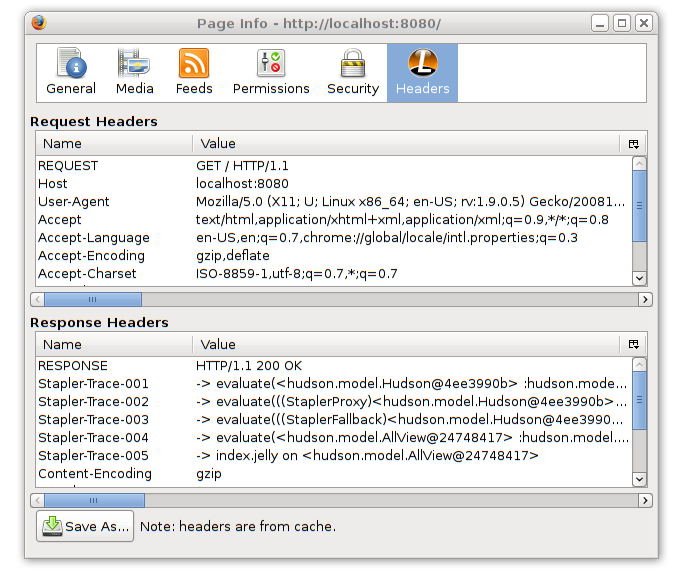Notice: this Wiki will be going read only early in 2024 and edits will no longer be possible. Please see: https://gitlab.eclipse.org/eclipsefdn/helpdesk/-/wikis/Wiki-shutdown-plan for the plan.
Difference between revisions of "Figuring out URL binding of Stapler"
| (One intermediate revision by the same user not shown) | |||
| Line 1: | Line 1: | ||
== Tracing Stapler's URL dispatching process == | == Tracing Stapler's URL dispatching process == | ||
| − | When you run Hudson with the stapler.trace system property set to true (which happens automatically when you run mvn hpi:run), Stapler will produce the log of how the incoming URL is evaluated/dispatched. This trace is made available as HTTP response headers like "Stapler-Trace-001", "Stapler-Trace-002", ... | + | When you run Hudson with the <code>stapler.trace</code> system property set to true (which happens automatically when you run <code>mvn hpi:run</code>), Stapler will produce the log of how the incoming URL is evaluated/dispatched. This trace is made available as HTTP response headers like "Stapler-Trace-001", "Stapler-Trace-002", ... |
| − | + | ||
| + | On Firefox, use the [http://addons.mozilla.org/en-US/firefox/addon/3829 Live HTTP header extension] to inspect response HTTP headers. Firebug can do this, too. | ||
[[Image:live-http-header-extension.png]] | [[Image:live-http-header-extension.png]] | ||
| Line 8: | Line 9: | ||
Also, in this mode, 404 error page will also contain the similar trace in the HTML format, along with how it eventually failed and what are possible URL bindings that were available at the point of failure. | Also, in this mode, 404 error page will also contain the similar trace in the HTML format, along with how it eventually failed and what are possible URL bindings that were available at the point of failure. | ||
| − | These records are meant to assist plugin developers by showing URL mapping of stapler. You can use it against Hudson core or other plugins to see how their URL binding works, too. For the complete reference of how URL mapping works in stapler, see the stapler documentation. | + | These records are meant to assist plugin developers by showing URL mapping of stapler. You can use it against Hudson core or other plugins to see how their URL binding works, too. For the complete reference of how URL mapping works in stapler, see [http://stapler.dev.java.net/reference.html the stapler documentation]. |
Latest revision as of 19:02, 17 July 2013
Tracing Stapler's URL dispatching process
When you run Hudson with the stapler.trace system property set to true (which happens automatically when you run mvn hpi:run), Stapler will produce the log of how the incoming URL is evaluated/dispatched. This trace is made available as HTTP response headers like "Stapler-Trace-001", "Stapler-Trace-002", ...
On Firefox, use the Live HTTP header extension to inspect response HTTP headers. Firebug can do this, too.
Also, in this mode, 404 error page will also contain the similar trace in the HTML format, along with how it eventually failed and what are possible URL bindings that were available at the point of failure.
These records are meant to assist plugin developers by showing URL mapping of stapler. You can use it against Hudson core or other plugins to see how their URL binding works, too. For the complete reference of how URL mapping works in stapler, see the stapler documentation.

